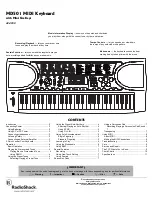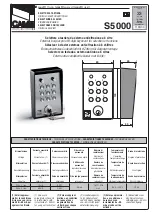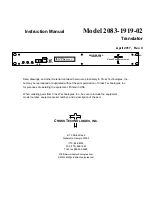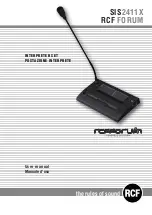
EXi: CX-3 Tonewheel Organ
230
Horn Mic Distance
[000…100]
This adjusts the distance between the Horn and its
microphones. Lower values bring the mics closer to the
speaker.
Horn Mic Spread
[000…100]
This adjusts the distance between the two Horn
microphones, to widen the stereo field. Higher values
increase the stereo effect.
7–2d: Rotor
The rotor carries the low frequencies of the Rotary
Speaker. Its parameters are identical to those of the
Horn, above.
Fast Speed
[000…100]
This specifies the speed of the Rotor when the
Speed
Switch
is set to
Fast
.
Slow Speed
[000…100]
This specifies the speed of the Rotor when the
Speed
Switch
is set to
Slow
.
Acceleration
[000…100]
This sets how long it takes the Rotor to change from
the
Slow
speed to the
Fast
speed.
Deceleration
[000…100]
This sets how long it takes the Rotor to change from
the
Fast
speed to the
Slow
speed.
Start Acceleration
[000…100]
This sets how long it takes the Rotor to come up to
speed after the
Mode Switch
has changed from
Stop
to
Rotate
.
Stop Deceleration
[000…100]
Specifies the time it will take for the Rotor to actually
come to rest after rotation is switched off.
This sets how long it takes the Rotor to come rest after
the
Mode Switch
has changed from
Rotate
to
Stop
.
Mic
The Rotary Speaker model includes two pairs of stereo
mics - one pair for the Rotor, and the other for the
Rotor.
Rotor Mic Distance
[000…100]
This adjusts the distance between the Rotor and its
microphones. Lower values bring the mics closer to the
speaker.
Rotor Mic Spread
[000…100]
This adjusts the distance between the two Rotor
microphones, to widen the stereo field. Higher values
increase the stereo effect.
7–2e: Horn/Rotor
Horn/Rotor Balance
[Rotor, 1…99, Horn]
This sets the output balance between the high
frequencies of the Horn and the low frequencies of the
Rotor.
Speaker Simulator
[Off, On]
This enables and disables modeling of the speaker
tone. Note that if the
Rotary Speaker Off Output
is set
to
Pre-Crossover
, the speaker simulation will also be
left out of the dry signal.
Horn Stop Phase
[Free, -180…+180]
When the
Mode Switch
is set to
Stop
, the Horn
gradually comes to rest pointing one way or another.
This allows you to control where it will stop.
Free
lets it come to rest naturally, at a more or less
random spot. The other settings,
–180
to
+180
, let you
force it to land in a specific position.
The speaker position has a dramatic effect on the tone,
so specifying a fixed position allows you to achieve
consistent timbral results.
Rotor Stop Phase
[Free, -180…+180]
This determines where the Rotor will land when the
Mode Switch is set to Stop. For more details, see “Horn
Stop Phase,” above.
▼
7–2: Page Menu Commands
The number before each command shows its ENTER +
number-key shortcut. For more information on these
shortcuts, see “ENTER + 0-9: shortcuts for menu
commands” on page 138.
• 0:
Write Program
. For more information, see “Write
• 1:
Exclusive Solo
. For more information, see
Содержание Electronic Keyboard
Страница 1: ...Parameter Guide Parameter Guide ...
Страница 2: ......
Страница 180: ...Program mode EXi 170 ...
Страница 290: ...EXi STR 1 Plucked String 280 ...
Страница 572: ...Sequencer mode 562 ...
Страница 700: ...Global mode 690 ...
Страница 751: ...Insert Effects IFX1 IFX12 Routing 741 Fig 2 3a Fig 2 3b ...
Страница 902: ...Effect Guide 892 ...
















































